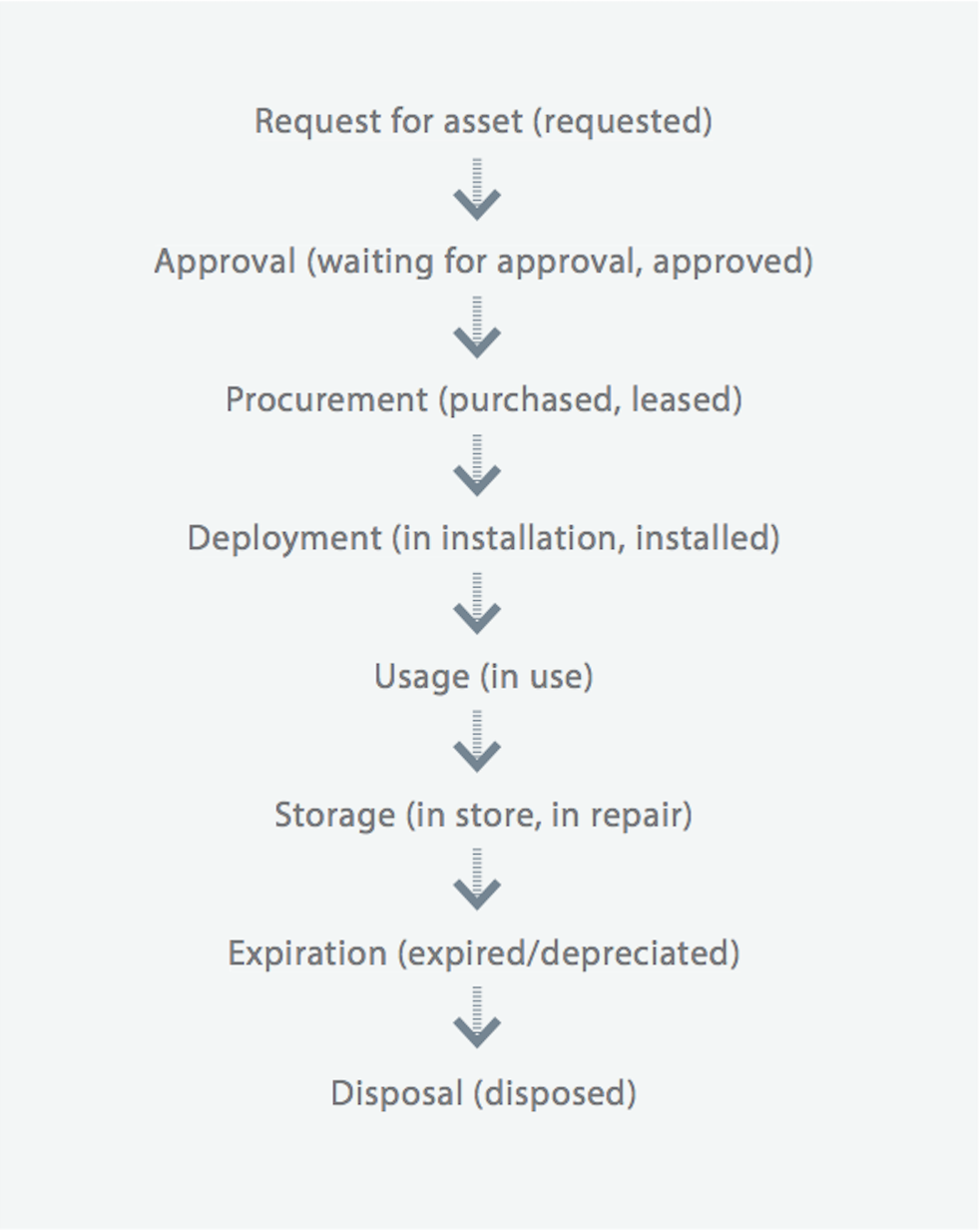[Blog] 8 significant stages of Asset LifeCycle
Every organization has assets. Your organization must be having assets too and managing them is always a challenging exercise.
This is why the term life-cycle is very crucial in asset management.
IT assets are generally managed using IT asset management (ITAM) software and a key process within asset management is the understanding of the asset life cycle. This gives the organization complete visibility and control of its IT assets.
Here’s an interesting fact:
In a recent analysis by Deloitte, it was found that if organizations manage their assets properly they will save on average 25% of their annual maintenance cost.
Intriguing right!

In the above diagram, an asset is initially requested by a department or a user. A purchase request is then raised and sent for approval. Upon approval of the purchase request, the asset is procured and installed in the IT environment.
The asset is then put to use by mapping it to a user. If the asset needs to be repaired or is not currently in use, it is placed in storage. Finally, if the asset has expired or depreciated, a decision must be made to either dispose or reuse the asset.
Another important task is to track asset states meticulously because they are dynamic in nature. For example, a workstation can be used for a couple of days and then kept in storage until the next need arises. Therefore, it is important that you periodically refresh your asset states and stay current.
Advancements in technology have benefited us with asset tagging concepts like barcodes, RFID, and GPS, which simplify tracking assets. These asset tagging concepts help reconcile ownership, location, and configuration of hardware assets continuously.
Asset data becomes more reliable
Having updated and accurate information about your assets, at any given point in time, helps you make the right decisions.
It offers scalability
As your organization grows in size, the number of IT assets required to support your business operations increases. A proper IT asset tracking process helps you track and maintain assets with minimal effort, regardless of what the numbers are. This allows your help desk staff to concentrate on resolving issues than tracking the assets.
You can plan ahead for any surge in IT asset requirement
Let's use the example of Walmart. During its peak season, the company hires temporary staff to meet the extra demand. This, in turn, causes a spike in gadget requirements. The company needs to have an optimal buffer stock of gadgets to run its business without interruption. This estimate of the buffer stock can only be easily identified if the existing assets are tracked properly.
Do you want an edge in managing your assets? Try ServiceDesk Plus for 30 days Free.
Topic Participants
Dinesh Bhaskaran
New to M365 Manager Plus?
New to M365 Manager Plus?
New to RecoveryManager Plus?
New to RecoveryManager Plus?
New to Exchange Reporter Plus?
New to Exchange Reporter Plus?
New to SharePoint Manager Plus?
New to SharePoint Manager Plus?
New to ADManager Plus?